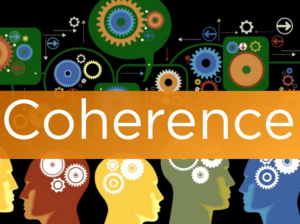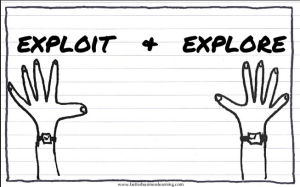 Innovation often fails to align to the strategic needs. This is often not the fault of the innovator.
Innovation often fails to align to the strategic needs. This is often not the fault of the innovator.
Many innovators are simply happily working away with no specific guidelines, apart from the general remit of “we need to be more innovative”, it lies in the boardroom that is not communicating the board’s needs clearly enough down the organization.
Building up our capacity to innovate does need to understand and reflect the organization’s business activities, as innovators need to grasp the value creation aspects that will deliver the necessary capital-efficient and profitable growth, and then ‘go in pursuit’ to achieve their contribution to these goals.
Even the basic questions often remain unclear, those of how are we looking to grow revenue, save costs, reduce working capital or improve our fixed capital? Managing our innovation activities can help in all of these. Actually if you ask I expect the CFO would say “all of them” but each does have implications on understanding of the fit and eventual role of innovation’s contribution.
Then where equally does risk fit into the strategic equation for innovation?
Innovators often lack the clarity or governance guidelines to know if they can or can’t ‘push’ for groundbreaking innovation.
Risk is kept vague so we can often avoid the unknowns associated with any really different innovation, it becomes ‘the art of avoidance’ by the person who wants innovation but not the risks associated with it.
Innovation is not the usual
Recently in a PA Consulting report called “Innovation as Unusual” they were suggesting the innovation spend just in the UK alone, is flushing some £65 billion down the drain each year, as nearly half the organizations waste good ideas, are far to risk averse and fail to invest boldly around more ground-breaking ideas.
So we are still seeing the majority of organizations are struggling with innovation and in the process they are losing out financially, forgoing huge opportunities in not achieving future competitive positions or foregoing the chances to radically alter their market position. It seems innovation remains incoherent within many organizations still.
PA Consulting in this report were suggesting there are five innovation killers – fear, lack of focus, innovation engine failure, the wrong ROI and finally, a real reluctance to invest. Pretty bad I think?
In one of the outcomes of the report it asks “can we continue to allow 47% of senior executives to describe their innovation activity as a ‘costly failure’?”
Some things need to radically change and having ‘coherence in the innovation activity needs to be central to this needed change. So where do we start?
Maybe we should all start visualizing first.
Recently XPLANE, visualization thinkers who apply a design thinkers approach, produced two brilliant visualizations on the organization, one as the Cost of Confusion and the other as the Value of Clarity. (direct pdf links)
Xplane quite rightly suggests that a picture is worth a thousand words, well for me, these two visualizations I would regard are worth millions to any organization wanting to understanding why their strategy and innovation efforts go wrong and how to begin to put them right.
I would suggest you download them and circulate these around your organization, starting with all your board members and then you really can begin to enter that necessary set of discussions about coherence or a lack of it.
Leveraging the power of the three horizon methodology for innovation
I greatly favor the three horizon methodology to work through for achieving this coherence in understanding. The three horizons offer an excellent framing technique to bring this ‘coherence’ that we need from our ‘here and know’ activities and future innovation efforts. This coherence leads onto knowing what innovation capabilities are needed, what are missing and those really critical ones required to defend the core more effectively alongside (yet separately) needed to expand the potential in the future.
Dedicating time to knowing your innovation capability fitness
I have been constantly working away at what constitutes the dynamic capabilities for innovation and those, shall we say as more static and simply repetitive. It is identifying the difference, and then knowing how to apply these that are dynamic and highly valuable to obtain, against those that simply require a little dampening down.
We then ‘map’ these to the innovation needed to build a growing innovation capability set. This work has a dedicated website for the building up of the case for focusing on this under www.innovationfitnessdynamics.com.
Knowing what are the critical factors for innovation and their dependence for sustaining innovation success is becoming such a vital necessity to understand so an organization can place the appropriate resources behind them.
The question is, which are critical, which naturally occur when others begin to be put into place, which seems to have limited or no real effect on changing the dynamics of innovation?
Deciding that capabilities can be better leveraged requires a separation of exploit and explore.
 The aligning of strategic direction (and importance) with any capability needs is in the understanding of what activities are diverging with the core and those converging.
The aligning of strategic direction (and importance) with any capability needs is in the understanding of what activities are diverging with the core and those converging.
Then we need to figure out the future core and start moving towards it. It is the two dynamics of exploitation and exploration we should be leveraging for our innovation and future growth.
Today we need to exploit and explore and our capabilities need to be built fit for one of these two purposes. Exploiting is today’s business need, to leverage and improve on the existing business and equally, in parallel, explore for tomorrow’s new business growth.
The need to diverge and converge
The diverging ones need to have a real emphasis on improving performance, how they are managed for cash or to eventually sell or dispose of. Then we have those that are converging onto the new ‘known’ core of the business to grow and expand.
So by recognizing these, and that is not easy in itself, you are beginning to know and identify the capabilities you need to have in place to fix today so as to make it as healthy as possible, alongside those new capabilities that will create a new winning set of growth and value propositions that give the ‘promise’ of what can come by applying different mindsets, resources and thinking.
We certainly need bolder investments in knowledge around the make-up of innovation capabilities
I certainly believe there is a real call for fresh and bolder investments in knowledge, in infrastructure that focus on activities that spur new approaches that lead to innovation. These are not just the traditional ones based on managing today’s core.
It is finding those innovations that provide new value, the new generation activity that is occurring from recognizing how we can build, yes build for further exploitation (extending the life) and exploration (new understanding) and manage each as separate risk evaluation exercises with different metrics of progress.
We also need a deeper innovation grounding of internal workings and alignment
What I feel we need is a deeper grounding in what is actually going on inside organizations within their innovation activities and how these align to the needs of strategy and what is clearly missing. We start here as it gives us all this clarity and coherence, missing in much of our existing understanding.
We have the real opportunity today, in finding new ways in combining the four emerging forces of knowledge, technology, entrepreneurship and innovation, which will drive the growth models of tomorrow. It is these that are forming the new innovations ‘black box.’
It is mastering this new ‘black box’ of actual innovation activities, exploring and exploiting the necessary innovation capabilities that are required to be ‘going on’ in organizations to achieve a closer coherence, one that can radically improve the innovation performance.
I have plenty of ideas, frames and methods built up to help you make innovation fit and be more coherent in its contribution.